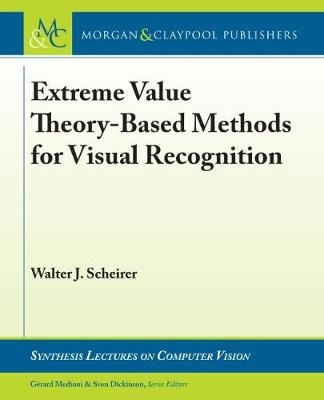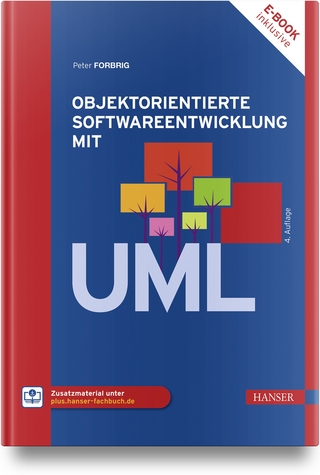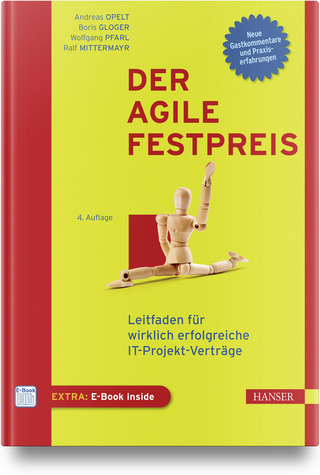
Extreme Value Theory-Based Methods for Visual Recognition
Morgan and Claypool Life Sciences (Verlag)
978-1-62705-700-4 (ISBN)
A common feature of many approaches to modeling sensory statistics is an emphasis on capturing the "average." From early representations in the brain, to highly abstracted class categories in machine learning for classification tasks, central-tendency models based on the Gaussian distribution are a seemingly natural and obvious choice for modeling sensory data. However, insights from neuroscience, psychology, and computer vision suggest an alternate strategy: preferentially focusing representational resources on the extremes of the distribution of sensory inputs. The notion of treating extrema near a decision boundary as features is not necessarily new, but a comprehensive statistical theory of recognition based on extrema is only now just emerging in the computer vision literature. This book begins by introducing the statistical Extreme Value Theory (EVT) for visual recognition. In contrast to central-tendency modeling, it is hypothesized that distributions near decision boundaries form a more powerful model for recognition tasks by focusing coding resources on data that are arguably the most diagnostic features. EVT has several important properties: strong statistical grounding, better modeling accuracy near decision boundaries than Gaussian modeling, the ability to model asymmetric decision boundaries, and accurate prediction of the probability of an event beyond our experience. The second part of the book uses the theory to describe a new class of machine learning algorithms for decision making that are a measurable advance beyond the state-of-the-art. This includes methods for post-recognition score analysis, information fusion, multi-attribute spaces, and calibration of supervised machine learning algorithms.
Walter J. Scheirer is an Assistant Professor in the Department of Computer Science and Engineering at the University of Notre Dame. Previously, he was a postdoctoral fellow at Harvard University, with affiliations in the School of Engineering and Applied Sciences, Department of Molecular and Cellular Biology and Center for Brain Science, and the director of research & development at Securics, Inc., an early-stage company producing innovative computer vision-based solutions. He received his Ph.D. from the University of Colorado and his M.S. and B.A. degrees from Lehigh University. Dr. Scheirer has extensive experience in the areas of computer vision and human biometrics, with an emphasis on advanced learning techniques. His overarching research interest is the fundamental problem of recognition, including the representations and algorithms supporting solutions to it. Gerard Medioni received the Diplome d'Ingenieur in Information at The Ecole Nationale Superieure es Telecommunications, in 1977, and the M.S. and Ph.D. degrees in Computer Science from the University of Southern California, in 1980 and 1983, respectively. He has been at USC since then, and is currently Professor of Computer Science and Electrical Engineering, co-director of the Institute for Robotics and Intelligent Systems (IRIS), and co-director of the USC Games Institute. He served as Chairman of the Computer Science Department from 2001 to 2007. Prior to this, he was President and CEO of I.C. Vision, in Los Angeles, California, and held positions of Associate Professor, from 1992-1999, Assistant Professor, from 1987-1992, and Research Assistant Professor, from 1983-1987, at the Departments of Computer Science and Electrical Engineering, at the University of Southern California. From 1979-1983, he was a Research Assistant in the Intelligent Systems Group at the University of Southern California. Prior to his academic career, he was a research engineer at Underwater Signal Processing Division at Thomson-CSF, in Cagnes sur Mer, France. From 2000 to 2001, while on sabbatical leave, he was Chief Technical Officer at Geometrix, Inc. in San Jose, California. Professor Medioni has made significant contributions to the field of computer vision. His research covers a broad spectrum of the field, such as edge detection, stereo and motion analysis, shape inference and description, and system integration. He has published 3 books, over 50 journal papers and 150 conference articles, and is the recipient of 8 international patents. Prof. Medioni is associate editor of the Image and Vision Computing Journal, associate editor of the Pattern Recognition and Image Analysis Journal, and associate editor of the International Journal of Image and Video Processing. Prof. Medioni served as program co-chair of the 1991 IEEE CVPR Conference in Hawaii, of the 1995 IEEE Symposium on Computer Vision in Miami, general co-chair of the1997 IEEE CVPR Conference in Puerto Rico, conference co-chair of the 1998 ICPR Conference in Australia, general co-chair of the 2001 IEEE CVPR Conference in Kauai, general co-chair of the 2007 IEEE CVPR Conference in Minneapolis, and general co-chair of the upcoming 2009 IEEE CVPR Conference in Miami. He is a Fellow of IAPR, a Fellow of the IEEE, and a Fellow of AAAI. Sven Dickinson received the B.A.Sc. degree in Systems Design Engineering from the University of Waterloo in 1983, and the M.S. and Ph.D. degrees in Computer Science from the University of Maryland, in 1988 and 1991, respectively. He is currently Professor of Computer Science at the University of Toronto, where he serves as Acting Chair. Prior to that, he served as Departmental Vice Chair, from 2003-2006, and as Associate Professor, from 2000-2007. From 1995-2000, he was an Assistant Professor of Computer Science at Rutgers University, where he also held a joint appointment in the Rutgers Center for Cognitive Science (RuCCS) and membership in the Center for Discrete Mathematics and Theoretical Computer Science (DIMACS). From 1994-1995, he was a Research Assistant Professor in the Rutgers Center for Cognitive Science, and from 1991-1994, a Research Associate at the Artificial Intelligence Laboratory, University of Toronto. He has held affiliations with the MIT Media Laboratory (Visiting Scientist, 1992-1994), the University of Toronto (Visiting Assistant Professor, 1994 1997), and the Computer Vision Laboratory of the Center for Automation Research at the University of Maryland (Assistant Research Scientist, 1993-1994, Visiting Assistant Professor, 1994 1997). Prior to his academic career, he worked in the computer vision industry, designing image processing systems for Grinnell Systems Inc., San Jose, CA, 1983-1984, and optical character recognition systems for DEST, Inc., Milpitas, CA, 1984-1985. His research interests revolve around the problem of object recognition, in general, and generic object recognition, in particular. He has explored a multitude of generic shape representations, and their common representation as hierarchical graphs has led to his interest in inexact graph indexing and matching. His interest in shape representation and matching has also led to his research in object tracking, vision-based navigation, content based image retrieval, and the use of language to guide perceptual grouping, object recognition, and motion analysis. One of the focal points of his research is the problem of image abstraction, which he believes is critical in bridging the representational gap between exemplar-based and generic object recognition. He has published over 100 papers on these topics in refereed journals, conferences, and edited collections. In 1996, he received the NSF CAREER award for his work in generic object recognition, and in 2002, received the Government of Ontario Premiere's Research Excellence Award (PREA), also for his work in generic object recognition. He was co-chair of the 1997, 1999, 2004, and 2007 IEEE International Workshops on Generic Object Recognition (or Object Categorization), co chaired the DIMACS Workshop on Graph Theoretic Methods in Computer Vision in 1999, and co-chaired the First International Workshop on Shape Perception in Human and Computer Vision in 2008. From 1998-2002, he served as Associate Editor of the IEEE Transactions on Pattern Analysis and Machine Intelligence, in which he also co-edited a special issue on graph algorithms and computer vision, which appeared in 2001. He currently serves as Associate Editor for the journals: International Journal of Computer Vision; Image and Vision Computing; Pattern Recognition Letters; IET Computer Vision ; and the Journal of Electronic Imaging.
Preface
Acknowledgments
Figure Credits
Extrema and Visual Recognition
A Brief Introduction to Statistical Extreme Value Theory
Post-recognition Score Analysis
Recognition Score Normalization
Calibration of Supervised Machine Learning Algorithms
Summary and Future Directions
Bibliography
Author's Biography
| Erscheinungsdatum | 09.03.2017 |
|---|---|
| Reihe/Serie | Synthesis Lectures on Computer Vision |
| Mitarbeit |
Herausgeber (Serie): Gerard Medioni, Sven Dickinson |
| Verlagsort | San Rafael, CA |
| Sprache | englisch |
| Maße | 191 x 235 mm |
| Gewicht | 260 g |
| Themenwelt | Informatik ► Software Entwicklung ► Agile Software Entwicklung |
| Informatik ► Theorie / Studium ► Künstliche Intelligenz / Robotik | |
| ISBN-10 | 1-62705-700-5 / 1627057005 |
| ISBN-13 | 978-1-62705-700-4 / 9781627057004 |
| Zustand | Neuware |
| Haben Sie eine Frage zum Produkt? |
aus dem Bereich


